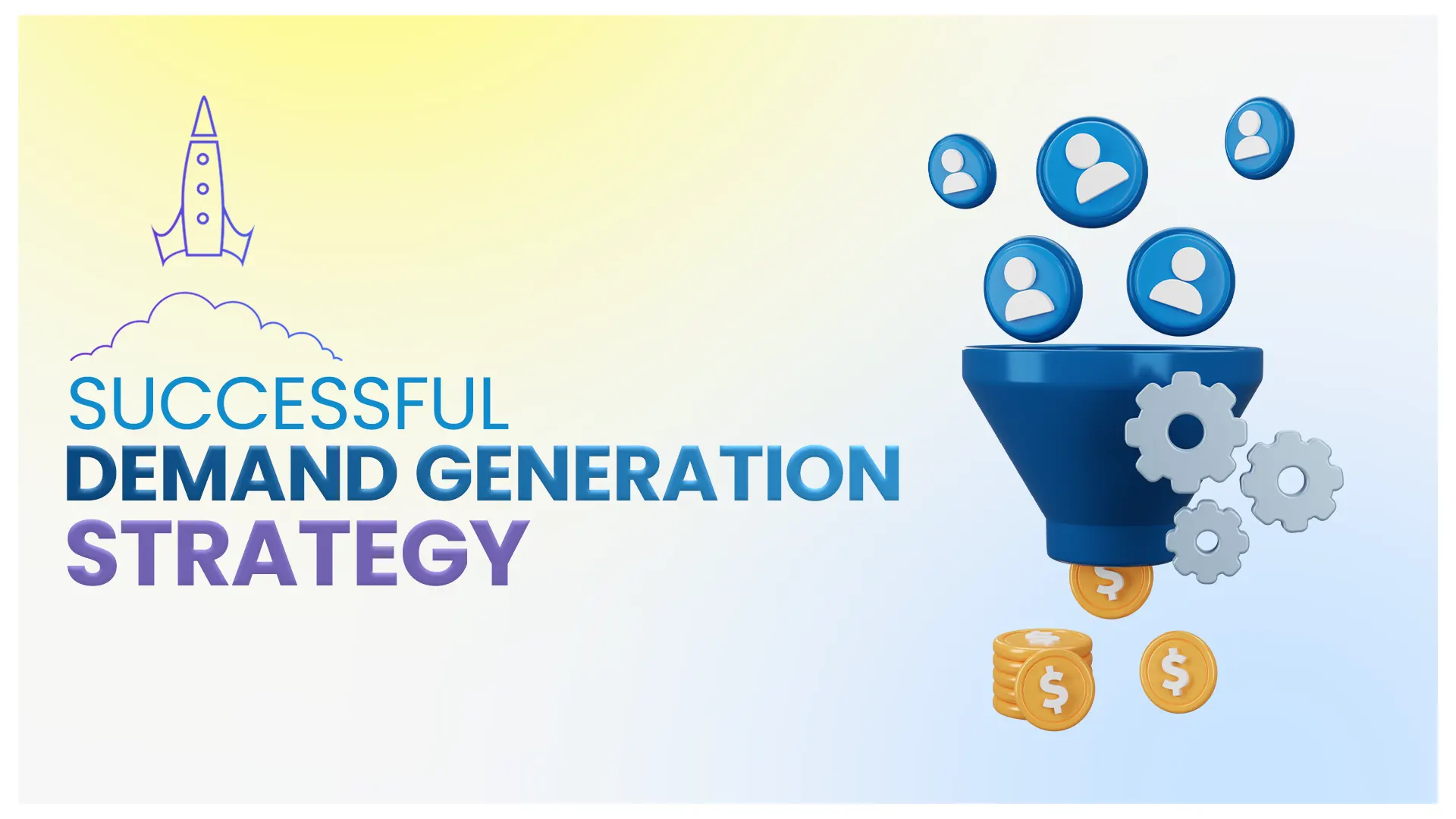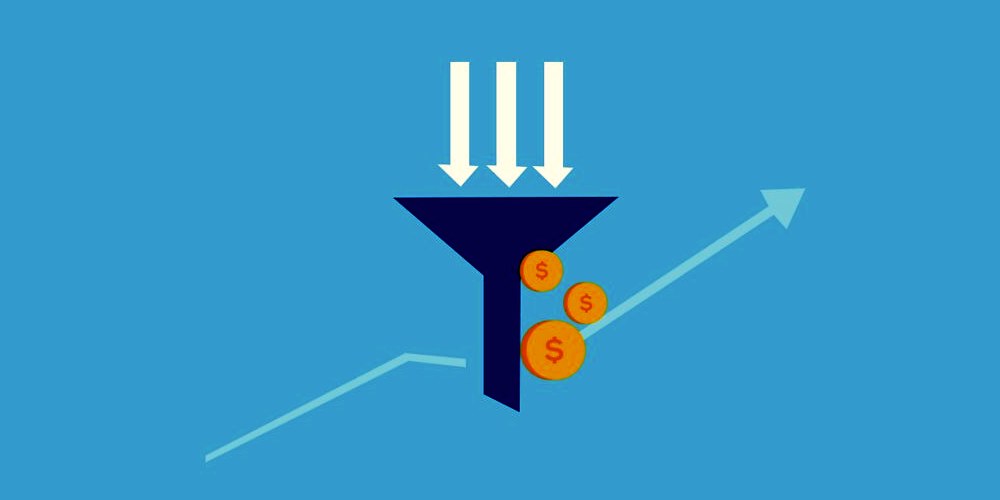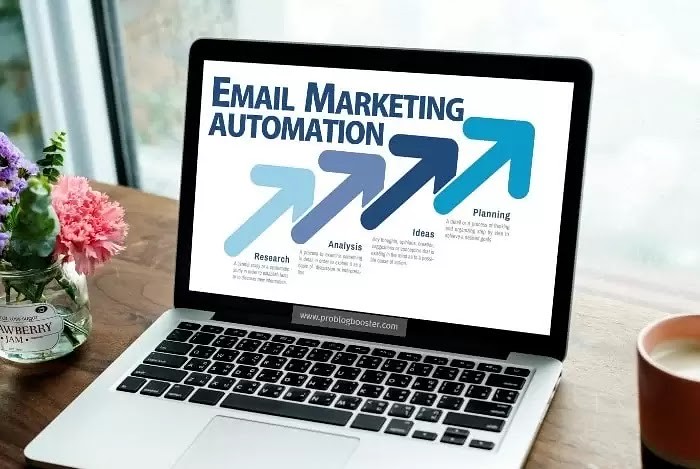In today’s business world, where there is cut-throat competition in every sector, a foolproof demand generation strategy is vital for boosting revenues and attracting quality leads.
This blog is a step-by-step guide for those struggling to make an effective strategy to generate organic demand for their products or services. The strategies will include ways to generate interest among the target audience, build brand recognition, and convert prospects into paying
customers.
Explore the fundamental components of the demand generation strategy and learn tips and tricks to improve your marketing initiatives. By the end, you will have a firm understanding of how to create a demand generation plan for dependable, high-quality leads.
Table of Contents
Understanding Demand Generation
Demand generation refers to the process of creating and maintaining interest in your goods or services among prospective customers. Demand generation strategies entail many marketing initiatives to raise awareness, spark interest, and increase demand for your products.
It goes beyond the traditional limits of lead generation by focusing further on generating demand and brand awareness. It helps you create a pathway for your sales teams. The goal is to push the buyers in the correct direction of the buyer’s journey, which consists of:
- Awareness
- Contemplation
- Final decision
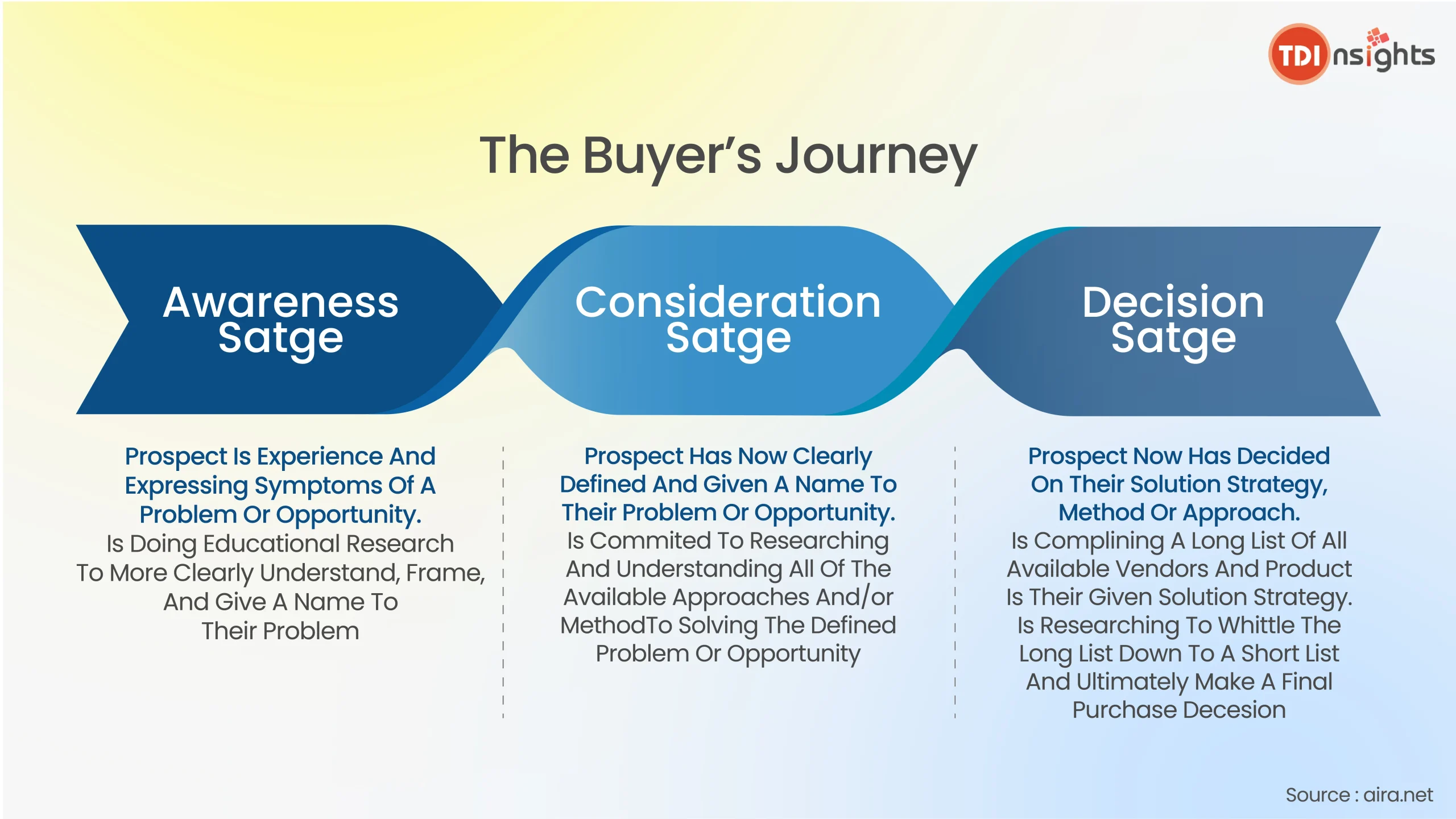
Demand generation mainly concentrates on the top of the sales funnel, but people often confuse it with lead generation, which is a follow-up of demand generation. Let us look at the difference below.
Demand Generation vs. Lead Generation
There is a slight difference between lead generation and demand generation. Lead generation focuses on getting a hold of the contact information of potential customers.
On the other hand, demand generation solely focuses on sparking a desire to buy the products or services. It is more elaborate; it involves building good relationships and nurturing them until they are ready to become customers.
Key Components of a Demand Generation Strategy
Below, we will discuss the essential steps to building an effective demand generation strategy for your firm to move forward with.
1. Researching Target Audience
To create an effective demand-creation plan, research and targeting are essential. First, gather information along these lines:
- Is there any need for this product?
- What is the number of people who are interested in buying the product?
Begin by identifying your target market— the demographic most likely to be interested in your goods.
Consider aspects like demographics, requirements, difficulties, and motives as you create complete buyer personas that represent your ideal customers. This enables you to tap into the appropriate audience with your marketing initiatives.
2. Market Research and Data Analysis
Gain a deep understanding of the market that falls under your sector. Conduct thorough market research to uncover the latest market trends and customer preferences. Analyze your competitor’s market strategies and find ways to make your brand stand out.
You can use any website analytics tool or social media analytics tool to gather insights into customer behavior.
3. Developing a Content Strategy
Nurturing your audience via good content is the goal of inbound marketing, also known as content marketing. Content types that can influence individuals to purchase from you include blog posts, advertisements, videos, how-to articles, and emails.
Creating material for search engines implies optimizing it for higher rankings in search engine results pages (SERPs).As a result, it is simpler for potential clients to find it on search engines like Google. There are several SEO tools that will help optimise your content, such as:
- SEMRush
- Ahrefs
- Yoast SEO
- Screaming Frog
- Moz
Some types of content marketing that the industry uses might help you boost awareness about your brand are:
Long-form content
Content such as blogs, white papers, case studies, and detailed guides helps people be aware of your services in detail and compare them with the competition.
Social Media Content
use social media to build a community and target a specific age group. Building your social media channels with informative infographics and trending topics will attract a sea of potential buyers. According to Whittington Consulting, will follow the company’s social media account to stay informed on their products.
Email Marketing
Email marketing can help with demand generation by directly engaging a specific audience and advertising goods or services. Email campaigns are a powerful tool for organizations to nurture leads, deliver insightful information, and encourage conversions.
This strategy enables personalized communication, the development of bonds with potential clients, and ultimately a rise in demand for the products.
4. Lead Nurturing
Although we have pitted demand and lead generation against each other previously, lead generation is a part of demand generation. say that lead generation is their prime focus. Leads should increase significantly as a result of a comprehensive demand generation strategy.
Teams from marketing and sales should collaborate throughout the buying process while staying aware of customer questions, concerns, and attitudes.
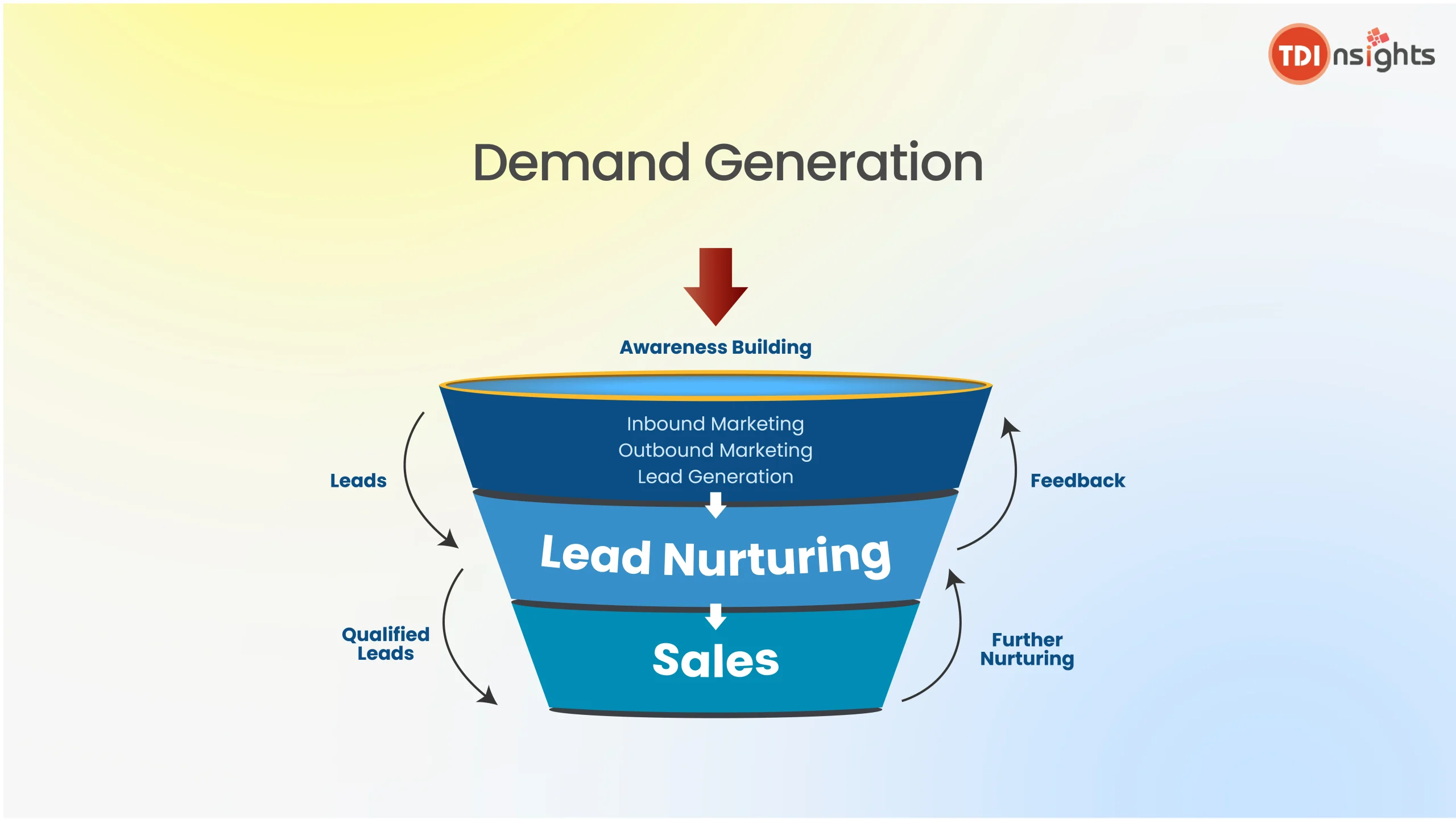
Marketing teams should nurture these high-value leads up until the point of purchase, depending on the strength of their resources, by offering relevant material that addresses frequent queries.
5. Dive into Account Based Marketing
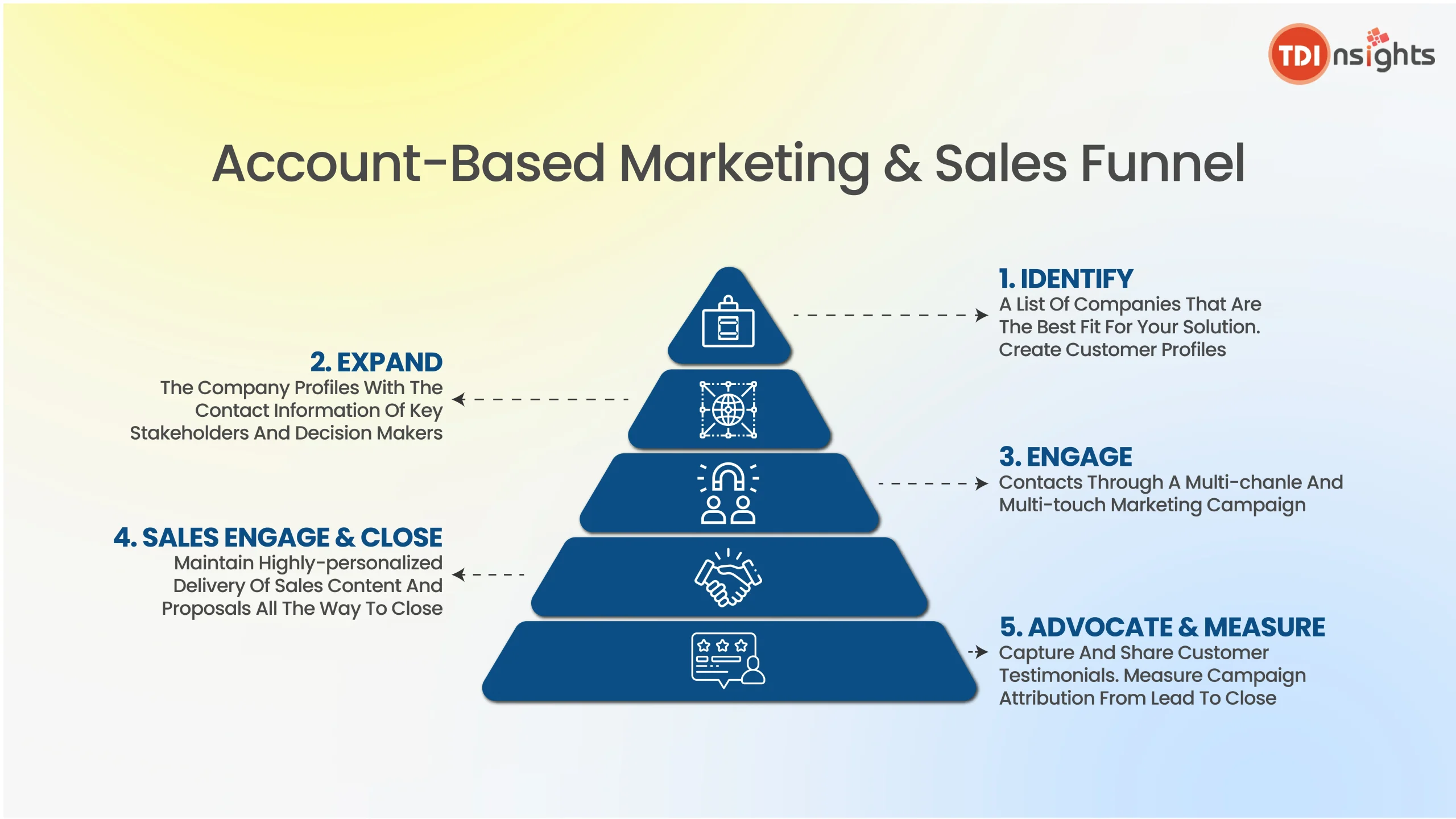
ABM, or account-based marketing, is a strategy in which the marketing and sales departments target several high-value accounts or companies.
It requires the marketing and sales departments to have a solid understanding of the accounts they are targeting. They should only target high-value customers that have the potential to boom and bring value to the company.
The best way to do this is to create buyer personas to market these leads. Give them personalized content tailored to their needs that confronts their pain points.
6. Use Pay-Per-Click (PPC)Adverts
It is a great strategy that lets you pay for the traffic to your website. A common form of PPC that everyone uses is search engine advertising.
For instance, when you search for the best restaurant near you on the Google search bar, the first brand mentioned as an option might have a
sponsored tag.
For PPC to work and give you effective results, you need to have a solid demand generation strategy that will push customers through your sales funnel. Some options for buying pay-per-click adverts are:
- Facebook ads
- Amazon Ads
- Google Ads
- Yahoo
7. Measurement and Analytics
Measuring and analyzing your demand generation campaigns is crucial to know your strengths and weaknesses. By leveraging optimal measuring and analysing tools, you can gain valuable insights into the efficacy of your actions.
Keep these important bits in mind before you delve into measurement and analytics:
Defining KPIs
KPIs are key performance indicators or metrics that you align with your marketing goals and initiatives. The metrics include website traffic, conversion rates, lead quality, engagement metrics, and the amount of revenue generated. You need to set clear KPIs to track and measure the performance of your marketing campaigns.
Using Tracking and Analytics Tools
Tools such as Google Analytics, automotive marketing platforms, and CRM systems track the performance of your marketing initiatives. Implement conversion tracking and UTM parameters to track campaigns and integrate analytics tools with marketing platforms to gather organic data.
Analyzing and Optimizing Content Based on Gathered Data
Try to analyze the data gathered through these tools from your campaigns regularly. It would help identify key trends, patterns, and weaknesses in your efforts.The performance of different
marketing channels— social media, search engine marketing, email
marketing, and influencer marketing—needs to be evaluated.
8. Collaboration Between Sales and Marketing Teams
Alignment between your sales and marketing teams is essential, as a collaboration between these two departments will lead to customer satisfaction and overall business growth. The points to consider to align sales and marketing teams are:
Working towards a common goal
Keeping both teams on the same page ensures they share the same objectives and work towards a common goal. It improves communication, streamlines processes, and fosters a unified drive within both to convert organic leads.
Collaboration and communication strategies
Encourage regular contact between the sales and marketing departments as one of your collaboration and communication strategies.
Create a feedback loop for exchanging ideas and feedback, schedule meetings, and decide on common goals. Encourage both teams to offer suggestions and pool their knowledge to improve the demand generation strategy.
Exchange Feedback
Sales teams can offer insightful information on customers’ preferences, problems, and objections during the sales process. Refine the marketing messaging and content, and run lead nurturing campaigns using this input.
To improve the sales strategy, marketing teams should share data on campaign performance, lead quality insights, and customer feedback with the sales team.
Instances of Successful Demand Generation Campaigns
To illustrate the success that comes with an effective demand generation strategy, we bring some examples from known companies that attracted audiences due to their strategies:
1. HubSpot’s Inbound Marketing
HubSpot, a top provider of marketing and sales tools, has established an inbound marketing strategy centred on content generation, lead nurturing, and educational resources.
They engaged their target audience by providing valuable content such as eBooks, seminars, and templates. Leads, brand recognition, and customer conversions significantly increased due to HubSpot’s demand generation strategies.
2. Slack’s Referral Initiative
The well-known team collaboration platform Slack introduced a referral program as part of its demand creation plan. Existing users were rewarded for inviting their friends and coworkers to use Slack.
Rewards were given to both the referrer and the referred user in exchange. As delighted clients spread the word about the strategy and attracted new users, this strategy quickly increased the number of users.
3. GoPro’s Influencer Partnerships
To advertize their action cameras, GoPro teamed up with well-known athletes, explorers, and content producers. These influencers generated interest and demand among their particular audiences by showcasing the potential of GoPro cameras in their captivating films and photographs. This tactic greatly impacted GoPro’s sales, user engagement, and brand recognition.
Actionable Takeaways
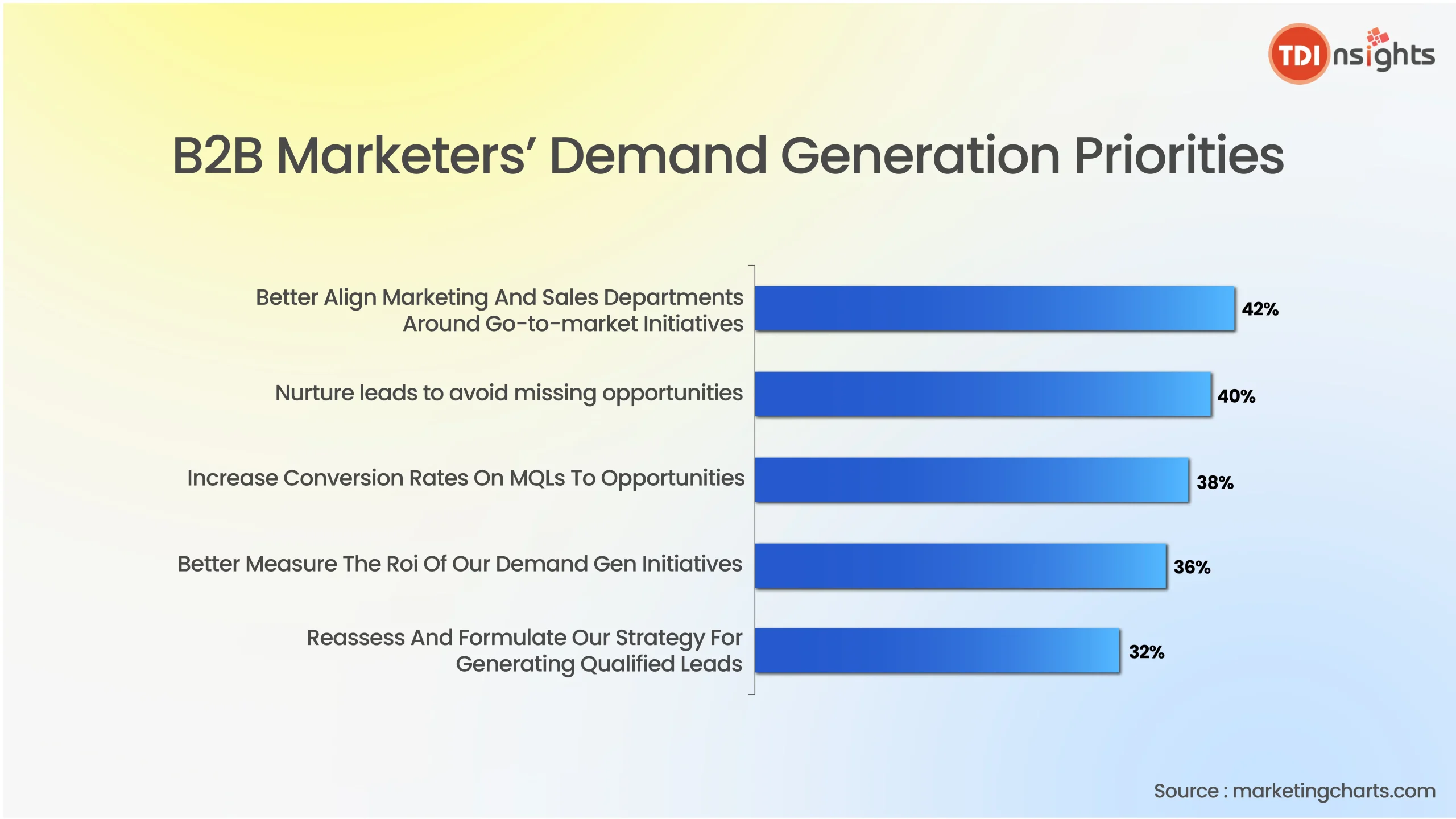
Let’s take a quick look at some actionable takeaways from real-world examples and the components of a demand generation strategy:
- Focus on inbound marketing by creating valuable content and resources, which includes eBooks, webinars, templates, etc.
- Implement referral programs and encourage customers to refer your services and products to friends and families.
- Leverage user-generated content by encouraging your audiences to share their experiences interacting with the product on social media through reviews, photos or videos.
- Influencer marketing is an excellent way to promote your products to generate market interest and demand.
- Execute personalizedlead nurturing campaigns to deliver content tailored to the target audience’s pain points.
- Fostering sales and marketing alignment to encourage collaboration and communication between the sales and marketing teams. This will ensure that the customer goes through a seamless buying process.
Bottom Line
You can now develop a clear strategy that engages customers with your brand and solutions by utilizing the appropriate demand creation tools and channels because you have a broader understanding of demand generation strategy.
You only need to launch the plan once it is ready. You may notice benefits in as little as a few months, depending on the strategies you’re employing and the quality of your research.
Your demand generation strategy will frequently vary owing to ongoing brand and company changes and external factors. Perhaps they’ll adopt new objectives, a different approach, or whole new services.
Remember that demand generation is not a race but a slow continuous run. So, tighten your shoelaces and get ready to take off!


